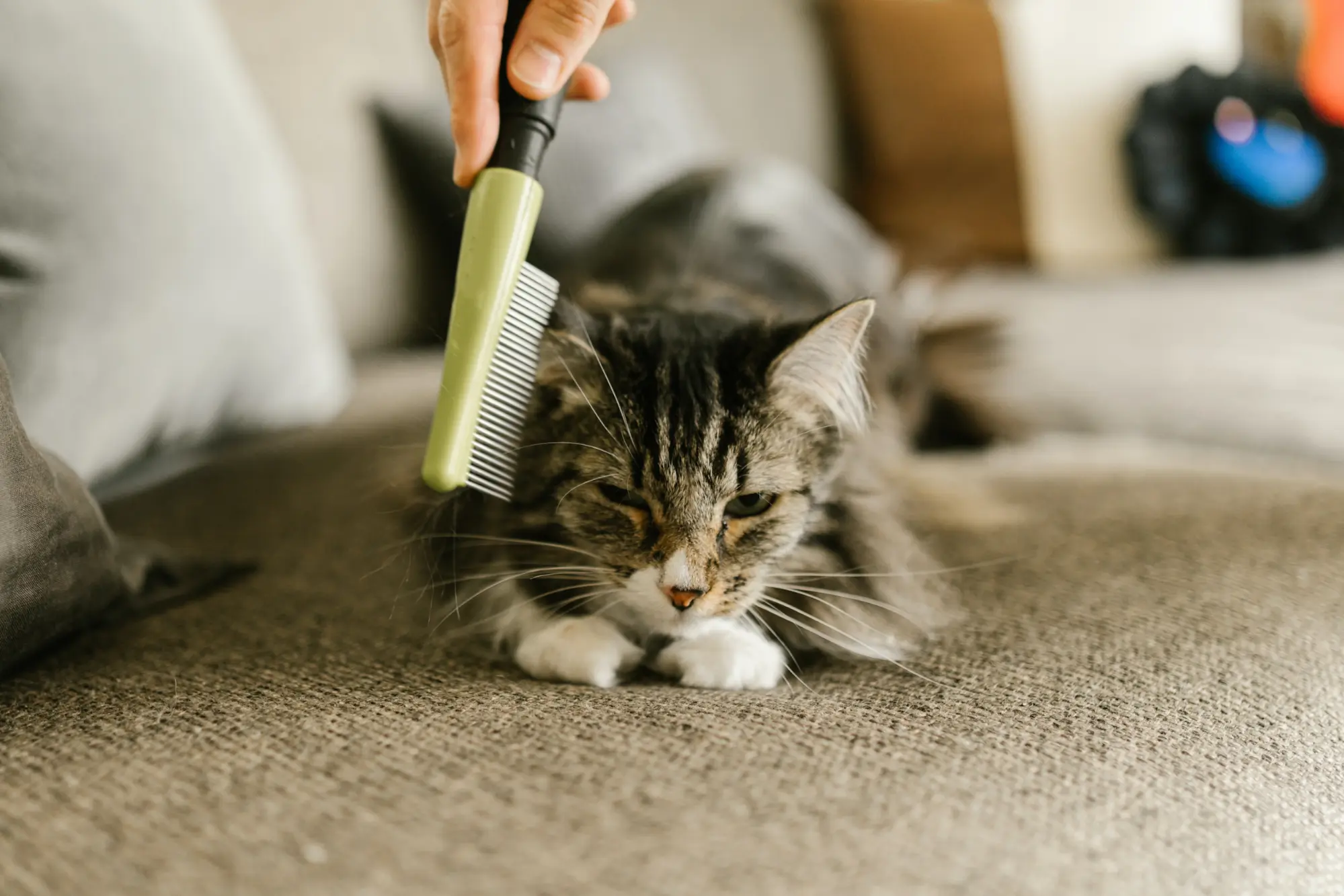ASPCA Pet Health Insurance Review
In this article, we will review ASPCA Pet Insurance so that you can measure it against other pet insurance companies and make an informed decision when you select cover for your cat, dog, or horse.
Our content follows strict guidelines for editorial accuracy and integrity. Learn about our and how we make money.
Henry Bergh, who once said that “mercy to animals means mercy to mankind”, founded the American Society for the Prevention of Cruelty to Animals (ASPCA) in 1866. As part of its goal to protect animals, the organization partnered with Crum & Forster to create ASPCA Pet Health Insurance in 2006.
However, with so many pet insurance providers in the U.S., it faces a lot of competition and it’s difficult to compare its offering with other providers.
Benefits and Limitations of ASPCA Pet Health Insurance
ASPCA pet insurance pros
Besides cats and dogs, they also cover horses.
Use an app to manage your insurance.
30-day money-back guarantee.
10% discount if you have more than one pet.
ASPCA pet insurance cons
14-day waiting period after getting a policy before you can claim for injuries.
Only three options for your deductible, and the highest is $500.

Source: pexels
What Does ASPCA Pet Health Insurance Cover?
ASPCA Pet Health Insurance offers two main policies for cats and dogs. This will assist pet parents when they need to cover the cost of emergency medical attention.
1. Complete coverage
Their Complete Coverage policy is a comprehensive plan that offers your furry friend accident and illness coverage. It covers a range of situations, such as accidents, illnesses, congenital conditions, alternative therapies, and behavioral issues.
If your pet falls ill, such as your cat developing diabetes or feline leukemia, then ASPCA Pet Insurance will cover the following costs:
Veterinarian treatment: This includes the typical range of activities that a vet performs, such as surveillance, diagnosis, treatment, surgery, and anesthesia. If your pet won’t be able to recover properly and they’re suffering, then this may also include euthanasia.
Prescribed food and supplements: If they’re considered necessary for your pet’s recovery, then they will be covered by ASPCA Pet Insurance. For example, prescription food can help with kidney issues, gastrointestinal issues, and following cancer treatment.
MRI, CT scans, and X-rays: These can be used to diagnose and monitor abnormal growths, spinal cord disorders, and brain diseases, including tumors and abscesses.
Stem cell therapy: These can, for example, be injected into your cat or dog’s body to help repair muscles, joints, and ligaments that aren’t working properly because of arthritis. If your pet is struggling with certain kinds of cancer, then their own bone marrow can also be used to treat them.
Medical supplies: During treatment, your vet must rely on certain materials to ensure your pet receives the best care. This may include bandages used to cover a surgically repaired opening.
Prescription medication: Your vet may prescribe certain medications after diagnosing or treating your pet. For example, if your dog has roundworms or threadworms, they will be prescribed an antiparasitic, such as ivermectin, to help them recover.
Tooth extractions: If your pet is suffering from an oral tumor, then your vet may have to remove some of their teeth to reach the abnormal growth.
Surgery and hospitalization: If your cat is experiencing seizures, then it may be hospitalized for observation and, following a diagnosis, it may need to undergo surgery. These are often some of the most expensive costs, and they’re covered by ASPCA Pet Health Insurance.
Intravenous (IV) fluids and medications: While your pet is recovering in the hospital, or if they’re brought in for a sudden severe illness, then they may need to receive fluids and medications directly into their bloodstream.
Alternative therapy: Sometimes a different approach can lead to promising results. As a pet parent, you will be able to ensure your pet is covered for alternative treatments, such as rehabilitative therapy and chiropractic care.
End-of-life expenses: This covers euthanasia and the general costs of putting your pet down if an illness has spread beyond healing and your pet is suffering. However, this doesn’t include the cost of a memorial or gravestone.
Cancer treatment: If your pet develops cancer, it will be covered for typical cancer treatments, such as chemotherapy and radiation treatment.
On top of this, your pet will also have access to treatment for behavioral problems. This usually surfaces when a pet experiences fear, stress, or anxiety, and it manifests as barking, destructive chewing, nipping, or aggression.
Besides covering illness, the APSCA’s Complete Coverage Policy also covers the cost of any injury your pet gets. For example, if they’re bit by a raccoon, then ASPCA Pet Health Insurance will foot the bill for any of the items mentioned above, which can also apply to accident coverage.
The ASPCA also has a Poison Control Centre, which you can contact if your pet ingests something it shouldn’t have. They have veterinary toxicology experts available 24/7, who are ready to assist your furry friend if they’re in need.
If your pet hasn’t been microchipped yet, then they will cover this cost. But this doesn’t include the cost of registration, monitoring, or renewal.

Source: Pexels
2. Accident-only coverage
The Accident-Only Cover option does exactly what its name suggests: it only covers accidents, not illnesses. This means that your pet will be able to receive medical attention if they’re physically harmed. However, if they develop an illness, you would have to cover the cost of treatment.
This pet insurance policy is more affordable than the Complete Coverage package and, if you’re working with a strict budget, then this will at least make sure that your pet is protected from immediate danger, such as bleeding out after an accident.
Similar to the Complete Coverage policy, your pet will also be covered for the cost of getting microchipped.
3. Does ASPCA Pet Health Insurance cover other animals?
Unlike most other pet insurance companies, ASPCA Pet Insurance offers two insurance policies for horses. Just like their plans for cats and dogs, they offer a Complete Coverage policy and an Accident-Only Coverage policy.
The main addition to both options is the inclusion of colic–a condition where horses develop acute abdominal pain–which is categorized as either intestinal dysfunction or intestinal inflammation. Between four and ten percent of horses develop colic during their lifetime, and it usually requires medical attention from a vet.
The horse policies offer some of the covered conditions mentioned above for cats and dogs, such as medical supplies, poison control consultation fees, tooth extractions, and prescription medications. However, the list of covered treatments isn’t as extensive.
To find out more about their horse insurance options, read the finer details on their sample plans for horses here.
Additional Coverage or Add-Ons for ASPCA Pet Health Insurance
So far, we’ve considered baseline policies that either cover your pet comprehensively or partially. If you’d like to take it a step further, you can attach the following add-ons to your main insurance policy:
1. Prime and basic add-ons
The Prime and Basic add-on options are for pet parents who would like to cover their cats and dogs for preventive care, which isn’t part of emergency medical treatment for accidents and injuries.
Each add-on offers a budget per item. For example, both the Basic and Prime Additional Coverage offers $50 for an annual checkup exam. You can find a full list of what’s covered in the table below, as well as how much is set aside for each item:
| Benefits | Basic Maximum Annual Budget | Prime Maximum Annual Budget |
|---|---|---|
| Dental Cleaning or Spay/Neuter | $100 | $150 |
| Annual Exam | $50 | $50 |
| Flea/Heartworm Prevention | Not covered | $25 |
| Canine DHLPP or Feline FVRCP | $20 | $25 |
| Rabies and/or Canine Lyme or Feline FIP | $20 | $25 |
| Canine Bordetella or Feline FELV Vaccine/Titer | Not covered | $25 |
| Fecal Test | $20 | $25 |
| Canine Heartworm or Feline FELV Test | $20 | $25 |
| Blood Test | Not covered | $25 |
| Urinalysis | Not covered | $25 |
| Deworming | $20 | $25 |
| Health Certificate | Not covered | $25 |
2. Routine and Platinum add-ons
Just like for cats and dogs, ASPCA’s Pet Health Insurance also offers horses additional coverage. This takes care of horses’ general maintenance, screening, and preventative tests.
For example, if they need to do a Coggins test, which determines whether a horse is a carrier of equine infectious anemia, the Platinum add-on will offer $25 to cover this cost. Similarly, both the Routine and Platinum add-ons offer $25 for tetanus or rabies.
Below, you can find an extensive list of what’s covered:
| Benefits | Routine Maximum Annual Budget | Platinum Maximum Annual Budget |
|---|---|---|
| Wellness Exam | $50 | $75 |
| Dental Floating | $74 | $200 |
| Blood Test | Not covered | $25 |
| Fecal Test | Not covered | $25 |
| Coggins Test | Not covered | $25 |
| WNV or EEE/WEE/VEE | $25 | $25 |
| Tetanus or Rabies | $25 | $25 |
| Herpesvirus or Strangles | Not covered | $25 |
ASPCA Coverage Levels and Customizations
Pet insurance usually allows a pet owner to make a unique selection of coverage levels, which then influence their monthly premiums and dictate to what degree they will be covered. ASPCA Pet Health Insurance offers the following options:
1. Annual deductibles
Before your insurance takes effect, you will have to pay annual deductibles. This is a sum of money that you pay toward your pet’s vet bills before your pet insurance provider starts to pay their portion of the reimbursement percentage, or reimbursement rate.
For example, imagine your cat fell off your roof, broke its ribs, and needs emergency surgery. Luckily, they pull through and you’re left with a bill of $2,000 for their treatment.
If your annual deductible is $250, then you would pay this amount toward the vet’s bill and $1,750 would remain. Thereafter, your insurance policy will take effect and your insurer will pay their portion of the agreed-upon reimbursement rate (see next section).
If you have a plan with ASPCA Pet Health Insurance, then you would have had to choose one of these three deductible amounts–$100, $250, or $500.
Since it’s an annual deductible, you will only pay this amount once a year if your pet needs medical assistance. For example, if your cat needs to have its tooth extracted in the same year it fell off the roof, then you won’t have to pay a deductible on the second vet bill. It’s considered a once-off annual cost.
2. Reimbursement rate or percentage
The reimbursement rate is the amount that your insurer will pay toward your pet’s medical bills after your deductible has been settled. Through ASPCA Pet Health Insurance, you can choose a reimbursement rate of 70%, 80%, or 90%.
To explain this further, let’s return to the above example where your cat needed emergency surgery. After settling your deductible, your insurance will kick in and pay its portion of the remaining bill. If your reimbursement rate is 80%, then it will pay 80% of the remaining bill ($1,750), which is $1,400, and you will pay the last 20%, which is $350.
3. Annual coverage limits
You will be given an annual limit on how much your insurance policy is willing to pay out. If your policy is with ASPCA Pet Health Insurance, you can choose any number from $2,500 up to unlimited coverage.
For example, if you choose an annual limit of $2,500 and, after the above incident, your cat is also diagnosed with cancer and requires radiation–which costs your insurer $1,440–your total annual bill will stand at $2,840. This means that the amount above $2,500, which is $340, will have to be paid by you out of pocket.

Source: Pexels
Remember -
Your annual limits, annual deductible, and reimbursement rate all impact your premium. Therefore, you should consider your choices carefully.
ASPCA Pet Health Insurance Exclusions
If you sign up for an ASPCA Pet Health Insurance plan, you will have to accept certain exclusions. The following two exclusions are common among pet insurance companies:
Waiting periods: Your pet will not have pet insurance for the first 14 days after your policy takes effect, for both accidents and illnesses. For example, if your dog steps on a sharp branch and needs stitches after your policy has been in effect for 5 days, then you will have to cover this cost. Waiting periods exist to help prevent pet owners from joining insurance plans when their pet is hurt and trying to claim immediately.
Preexisting conditions: Your pet is not covered for conditions that were diagnosed before it was enrolled with ASPCA Pet Insurance. For example, if your cat is diagnosed with feline leukemia just before you sign up for insurance, then it won’t be covered. However, if your cat has been symptom and treatment free for 180 days, then it’s no longer considered a preexisting condition.
Besides the abovementioned exclusions, there are also general exclusions that apply to your policy with ASPCA Pet Health Insurance. Some of these include:
The cost of boarding.
Grooming and grooming supplies.
Training or training devices.
Breeding, pregnancy, or nursing.
Funeral services, memorial items, and urns.
Experimental treatment or medication.
House call fees, such as travel costs.
Cosmetic procedures.
If you’d like to see an extensive list of all exclusions, download their sample policy and familiarize yourself with the ins and outs of what they don’t offer.
Factors That Impact Your Premium
Your monthly premium is determined based on two categories of factors. Firstly, it considers your pet, and secondly, it considers your chosen coverage levels.
In terms of your pet, ASPCA will determine how risky it will be for them to insure your pet. They will specifically consider the breed, age, gender, and location you’re based in. For example, they have statistically determined that certain breeds pose a higher risk to insure than others, such as bulldogs which often have many health issues throughout their lives.
On the other hand, ASPCA will also consider your coverage levels. If you selected a high deductible, a low reimbursement rate, and the lowest annual limit, then you will pay a lower monthly premium–and vice versa.
ASPCA Pet Health Insurance Compared to Other Pet Insurance Plans
| ASPCA | Figo | Pets Best | Healthy Paws | Embrace | |
|---|---|---|---|---|---|
| State availability | Available in all 50 states | Available in all 50 states | Available in all 50 states | Available in all 50 states | Available in all 50 states |
| Waiting period for injuries | 14 days | 1 day | 3 days | 15 days | 2 days |
| Waiting period for illness | 14 days | 14 days | 14 days | 15 days | 14 days |
| Reimbursement level | 70% 80% 90% | 70% 80% 90% 100% | 70% 80% 90% | Varies by pet age | 70% 80% 90% |
| Deductible choices | $100 $250 $500 | Varies by pet age | $50 $100 $200 $250 $500 $1,000 | Varies by pet age | $200 $300 $500 $750 $1,000 |
Key Takeaways
Although ASPCA Pet Health Insurance appears to be strongly linked to the ASPCA, the reality is that Crum & Forster only partnered with ASPCA so that they can use their name to market their pet insurance product. This means that Crum & Forster pays royalties to the ASPCA to use their name, but the ASPCA doesn’t have any involvement outside of this agreement.
That being said, Crum & Forster is a trusted provider that’s been around since 1822, and they claim to have processed over 2.2 million pet insurance claims over the last 20 years.
ASPCA Pet Health Insurance and Spot Pet Insurance are both underwritten by the United States Fire Insurance Company. There are, of course, slight differences between the two, but they are incredibly similar.
The most unique feature of ASPCA Pet Health Insurance is that it also offers insurance for horses. The majority of pet insurance companies only cover cats and dogs, so this gives them an edge when it comes to pet owners who have horses.
Remember -
Read several pet insurance reviews before you make a final decision. Choose the best wellness coverage for your pet.
Frequently Asked Questions about ASPCA Insurance
Can you customize your pet insurance with ASPCA Pet Health Insurance?
You can choose your deductible and reimbursement percentage, as well as your annual limit, from a list of options. This will remain in place until you renew your policy, at which point you can change your initial selection. For example, you can then raise your deductible from $250 to $500, which will lower your premium.
How long will it take to process a claim from ASPCA Pet Health Insurance?
You can submit your claim online, and it will usually be addressed within 30 days. If you log in to the member center, you will be able to track the progress of your claim.
What can you do on the ASPCA Pet Health Insurance app?
The ASPCA Pet Health Insurance app can be used to submit a claim, sign up for a direct deposit, locate a vet nearby, and track your claims. It’s called the My Pet Insurance app, and you can find it on both the Apple App Store and Google Play Store.
You can reach us at 1-888-912-2132 or send an email to Help@PolicyScout.com to get assistance from one of our trained consultants about your options.